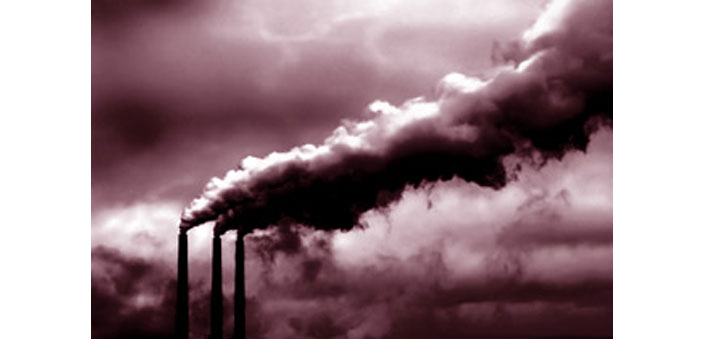In recent years there have been a lot of discussions about climate change. Why it occurs, how it occurs, and how it affects our life. The climate change phenomenon is not a new occurrence. What is new is the understanding of climate change from various dimensions, through the understanding of ‘science of climate change’. Research carried out by scientists show that basically climate change has been caused by the release of carbon dioxide and other ‘greenhouse gases’ into the atmosphere as a result of energy consumption by human activities.
The greenhouse gases
Greenhouse is a closed house generally used for gardening where sunlight is allowed through any transparent glass or other materials. This helps to convert the same into heat, that is stored as thermal energy. So even after the sun sets, it releases that energy slowly and properly.
In our atmosphere, some chemical compounds are available in the form of gases like carbon dioxide (CO2), methane (CH4), nitrous oxide (N2O), fluorinated gases etc., which can trap heat from the sun. The molecular structure of these gases enable them to absorb heat available from the sun during day time, and keep the atmosphere warm at varying magnitude at various geographical locations, generally known as global warming. Since the process of warming by absorbing the heat is similar to that of a ‘greenhouse’, these gases are known as ‘greenhouse gases’. Therefore, when more greenhouse gases are available in our atmosphere mainly due to industrial activities, the capacity of the atmosphere to retain heat from the sun would be greater. When a greater quantum of heat is retained in the atmosphere, it leads to warming of the atmosphere. If more greenhouse gases are retained in the atmosphere at a faster rate, there will be faster warming indicated by faster temperature rise, and all the irregularities of the natural system of functioning on the Earth, known as ‘ecosystem functioning’, would be interrupted.
The beginning of global warming
Human activities in the form of energy consumption, have contributed these greenhouse gas emissions to the atmosphere, since the year 1764, with the invention of the spinning engine and the growth and spread of industrial revolution. Carbon dioxide emissions into the atmosphere started. But at that time or even long thereafter, till World War I, the retention of CO2 in the atmosphere was not at an alarming rate. But when – (i) population growth started to increase at an alarming rate, and thus, food requirement also shot up and (ii) rural deforestation started to make available more agricultural land for food production; and (iii) rapid cutting of trees and plantations in the urban and sub-urban areas started happening – all these simultaneous activities increased the greenhouse gas retention in the present day atmosphere, thereby causing the Earth’s surface temperature to rise at an alarming rate.
With the growth of industrial development, the energy consumption level of human society has increased phenomenally. This negative impact has been aggravated by deforestation. In the absence of deforestation, trees and phytoplankton would have absorbed the CO2 for their own needs, thus resulting in: (i) reduced volume of such gases in the atmosphere, reducing the capacity to retain the heat available from the sun, and slowing the atmospheric warming, and thus mitigating naturally the temperature rise; and (ii) release of Oxygen or O2 into the atmosphere, which is required for all living and non-living resources on planet Earth.
What is coastal society?
Coastal society is a society that has grown in the coastal zone and enjoys both the privilege of coastal ecosystem functioning as well as of the nearby hinterland, i.e., the land away from the coastal zone. Coastal society summarily means the demography or the population dynamics of a coastal zone. Our perception of the coastal society has components like: (i) people with low economic status; (ii) both male and female adult members of most of the families are daily wage earners; (iii) most of the working people are fisherfolk by profession; and if such coastal zones are designated holiday destinations or used for coastal tourism purpose, the fisher folk can work for their livelihood as (iv)service providers to hotel and resorts as temporary or permanent employees; (v) independent small traders of handicraft through shops or seller of food items like coconut (most of the coastal areas have plenty of coconut trees) or fish caught from the nearby coastal waters; and (vi) local transport and tour operators.
All these demographical components of any coastal society put together sustain the local economic growth of any coastal society, and there is no doubt that all such components are fully dependent upon robust ‘coastal ecosystem functioning’.
The coastal ecosystem functioning
The dynamic operational way of an ecosystem in a coastal environment influenced by offshore marine environment may be called ‘coastal ecosystem functioning’. Since the components of a coastal ecosystem varies from coast to coast, the operational way of functioning of coastal ecosystem varies – most surprisingly the end product, i.e., release of oxygen and sequestering the carbon dioxide. If this is accepted, it can safely be said that coastal ecosystem, through its ‘operational way’ or functioning provides direct services to human beings.
Relation between a coastal society and coastal ecosystem (services)
In order to understand the relationship between the ‘coastal ecosystem functioning’ and ‘sustenance of livelihood of a coastal society’, it is necessary to understand the resultant factors of any ecosystem functioning. Components of natural coastal ecosystem are enormous, complex, and varying in nature – from planktons to mega-consumers like humans. Deliverables or the products of coastal ecosystem functioning are of two types: (a) goods and (b) services.
Green planktons absorb the CO2 from the atmosphere and fix it as food through the process of photosynthesis, to provide fish and other economically valuable fishery food for their growth and the fisher folk catch and sell the catch to local markets or to the exporters. Also through coastal ecosystem functioning, O2 is released into the atmosphere – simply put, enabling us to breathe! Therefore, a particular coastal ecosystem provides: (i) direct services to human beings by converting CO2 into O2 and, (ii) providing the serene coastal environment that people can enjoy through coastal tourism.
Impact of climate change on a coastal society
Various scientific reports have opined that because of high energy consumption and rapid deforestation in the land area along with the coastal deforestation caused mainly by the oil pollution at sea, have reduced the capacity of carbon sequestration (absorption to fix) by plants at land surface. This has also led to the killing of plankton in the seawater, change in the chemistry of air-sea interaction of CO2 resulting in ocean acidification. This means, the alteration of marine biogeochemical cycles, in turn altering the coastal ecosystem functioning, upon which the very basis of coastal society depends.
Not only has the availability of ‘goods’ and ‘services’ of the marine and coastal environment altered, but because of excess of heat in the lower atmospheric level down to the upper layer of the seawater, the health of the costal environment is also deeply and adversely affected. We need to decide now, and immediately, how such a trend of adverse impact on the coastal society can be reversed.


